Historical Context and Evolution
Origin of TDD in Extreme Programming
Test-Driven Development (TDD) originated in 1999 during the Extreme Programming wave. It was first introduced by Kent Beck, who emphasized the importance of writing tests before production code to ensure high-quality software. Over the past 20 years, TDD has evolved and been adopted by many leading tech companies, becoming a significant practice in the software industry.The Benefits of TDD
Modularity and Maintainability
TDD forces code to be modular and testable, enhancing flexibility, maintainability, and reusability. By writing tests first, developers are encouraged to break down their code into smaller, more manageable units.Reduced Cognitive Overload
By breaking down code into smaller, testable units, TDD helps reduce cognitive overload for developers. This makes it easier to understand and manage complex systems, leading to more efficient and effective development.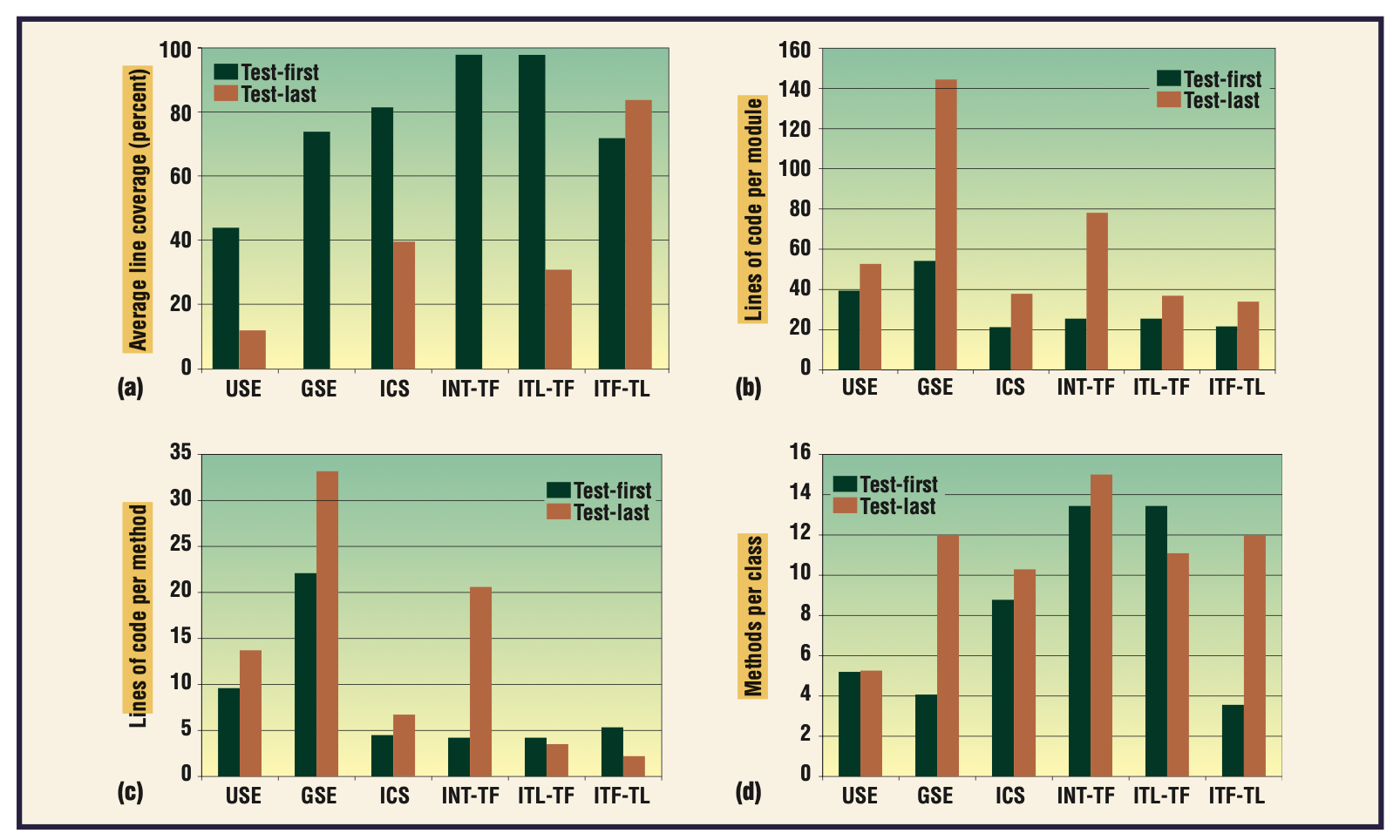
Documentation
Tests serve as living documentation for the codebase, providing useful examples regarding the intended behavior of the software. This helps with onboarding new developers, or providing assistance to integration teams. Documentation and comments can fall out of sync, but automated tests are the most trustworthy form of documentation, as they are always up-to-date and accurate.Improved Code Design
TDD encourages developers to focus on code design and architecture from the start. By writing tests first, developers are forced to think about the design of their code and how it will be used. This leads to cleaner, more maintainable code. This, my friends, is why TDD is not a testing technique but a design technique. We can always test our code after writing it, but TDD forces us to think about the design first.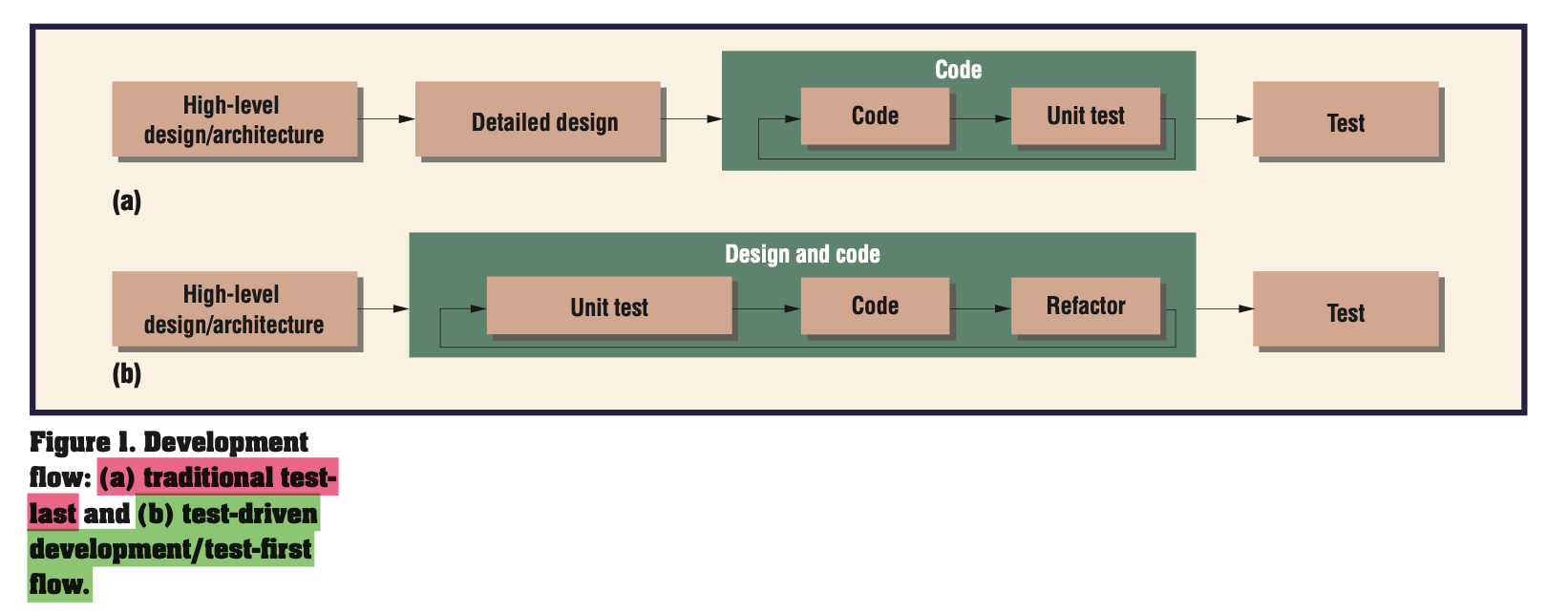
The Three Laws of TDD
- You may not write production code until you have written a failing unit test.
- You may not write more of a unit test than is sufficient to fail, and not compiling is failing.
- You may not write more production code than is sufficient to pass the currently failing test.
- “Clean Code” - Robert C Martin
The Principles of TDD
Readability Readability Readability
Readability is the number one rule in TDD. It is essential to write tests that are easy to understand and maintain. To achieve this:- Build well designed helper functions and abstractions to keep tests concise and readable.
- One assertion per test to keep the test focused and clear.
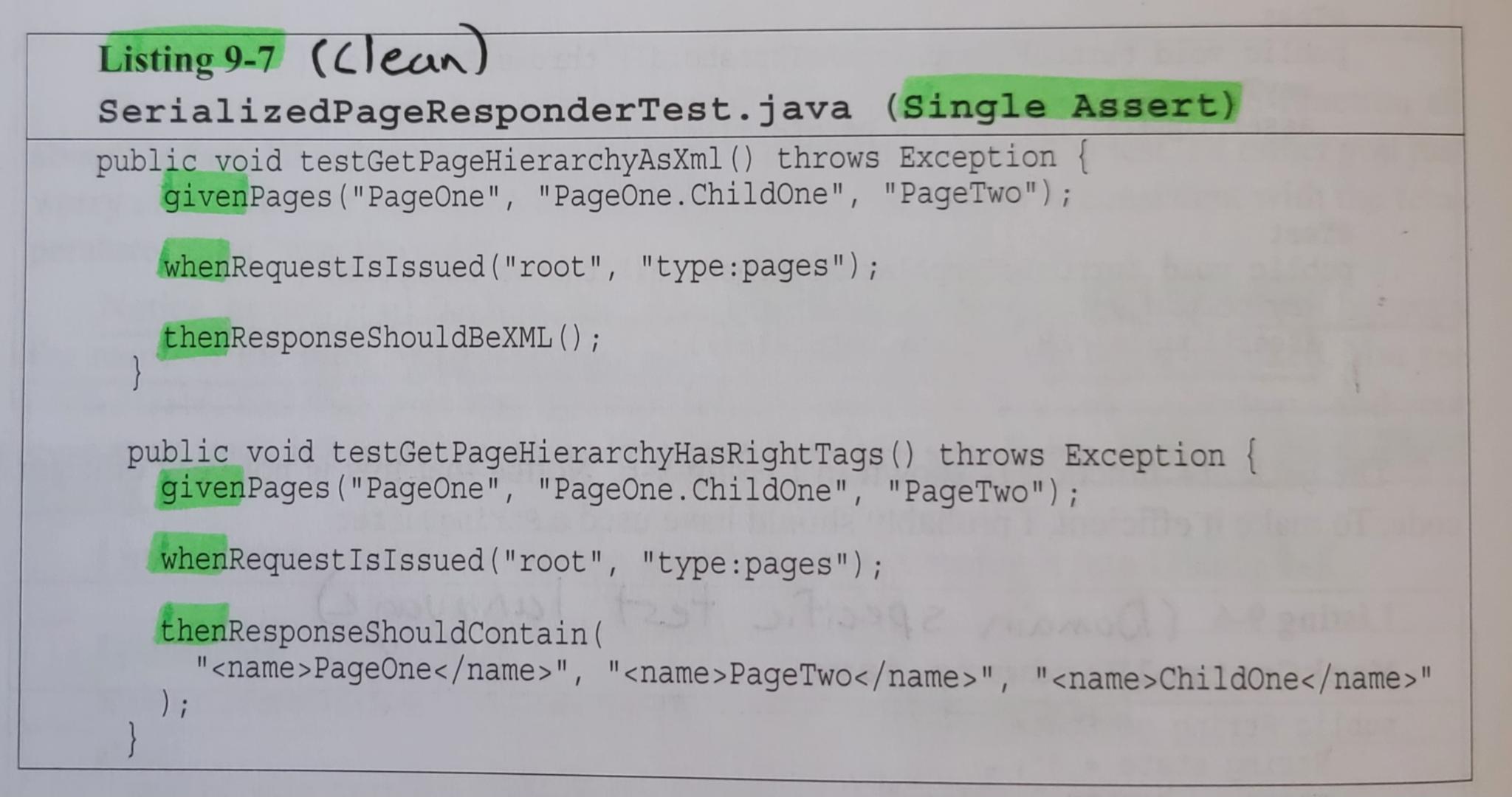
FIRST Testing Principles
Clean tests follow the FIRST principles:- Fast: Tests should provide quick feedback, allowing developers to iterate rapidly.
- Independent: Tests should run in isolation, ensuring that they do not depend on each other.
- Repeatable: Tests should work in any environment (local, CI/CD, etc), eliminating excuses for failures.
- Self-Validating: Tests should have a boolean output (pass/fail), making it clear whether the code meets the requirements.
- Timely: Tests should be written just before the production code. If written after, the production code may not be designed to be testable.
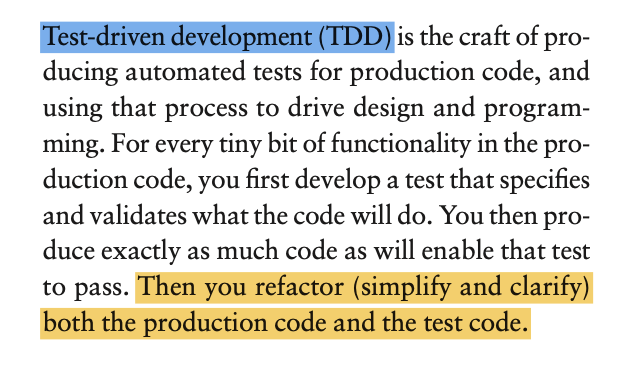
Testing Code as Important as Production Code: Keep it Clean
In TDD, testing code is considered as important as production code. This means that the same principles of good design, readability, and maintainability apply to both. By following best practices, TDD helps improve both test design and production design simultaneously. It’s important to remember that testing code can rot over time if not maintained properly. This can lead to a decrease in the effectiveness if they are difficult to understand and maintain. Therefore, it is essential to refactor and maintain test code just like production code.
Challenges and Considerations
Test Driven Development isn’t a magic bullet. It comes with its own set of challenges and considerations. Here are a few to keep in mind:- Initial Learning Curve and Training Costs: Implementing TDD requires training and familiarizing the development team with the methodology. This can involve a significant initial investment of time and resources.
- Increased Initial Development Time: Writing tests before the code can slow down initial development. Developers spend additional time on writing tests which might delay feature implementation at first.
- Resistance to Change: Teams accustomed to traditional development methodologies might resist adopting TDD due to the cultural shift required.
- Perceived Lack of Immediate Benefits: The benefits of TDD, such as reduced bug counts and improved code quality, might not be immediately visible. This can lead to skepticism among developers and managers.
- Test Maintenance Overhead: Maintaining tests can add to the development overhead, especially when the test system is not designed well. SOLID principles apply to test code as well.
- Difficulty in Testing UI and Complex Interactions: TDD can be challenging to implement for user interface (UI) development or complex interactions where writing automated tests is not straightforward. With time, research and experience, these challenges can be overcome.
Tools for TDD
Choosing the right tools for TDD can significantly impact your development process. There are a lot of possible tools from testing frameworks, to IDE extensions, to CI/CD integrations and more. One of the most useful tools I’ve used is the VS-Code extenstion Test Explorer UI which allows you to easily run individual tests, groups of tests, or all tests in your project from the sidebar. It also provides a visual representation of the test results, making it easier to identify failing tests and provides quick access to the logs for individual tests. Being able to run tests individually speeds up the process, but also forces you to make the tests independent. This explorer can be used for front-end, back-end and even smart contract testing.Testing Tools: The State of JavaScript 2023
The State of JavaScript surveys the JavaScript ecosystem annually, providing insights into the tools and technologies used by developers. In the 2023 survey, the following testing tools were highlighted. The chart below shows the decreasing popularity of Mocha and Cypress in favor of Jest and Playwright. Storybook also remains a popular tool for developing UI components in isolation, allowing developers to build and test components independently.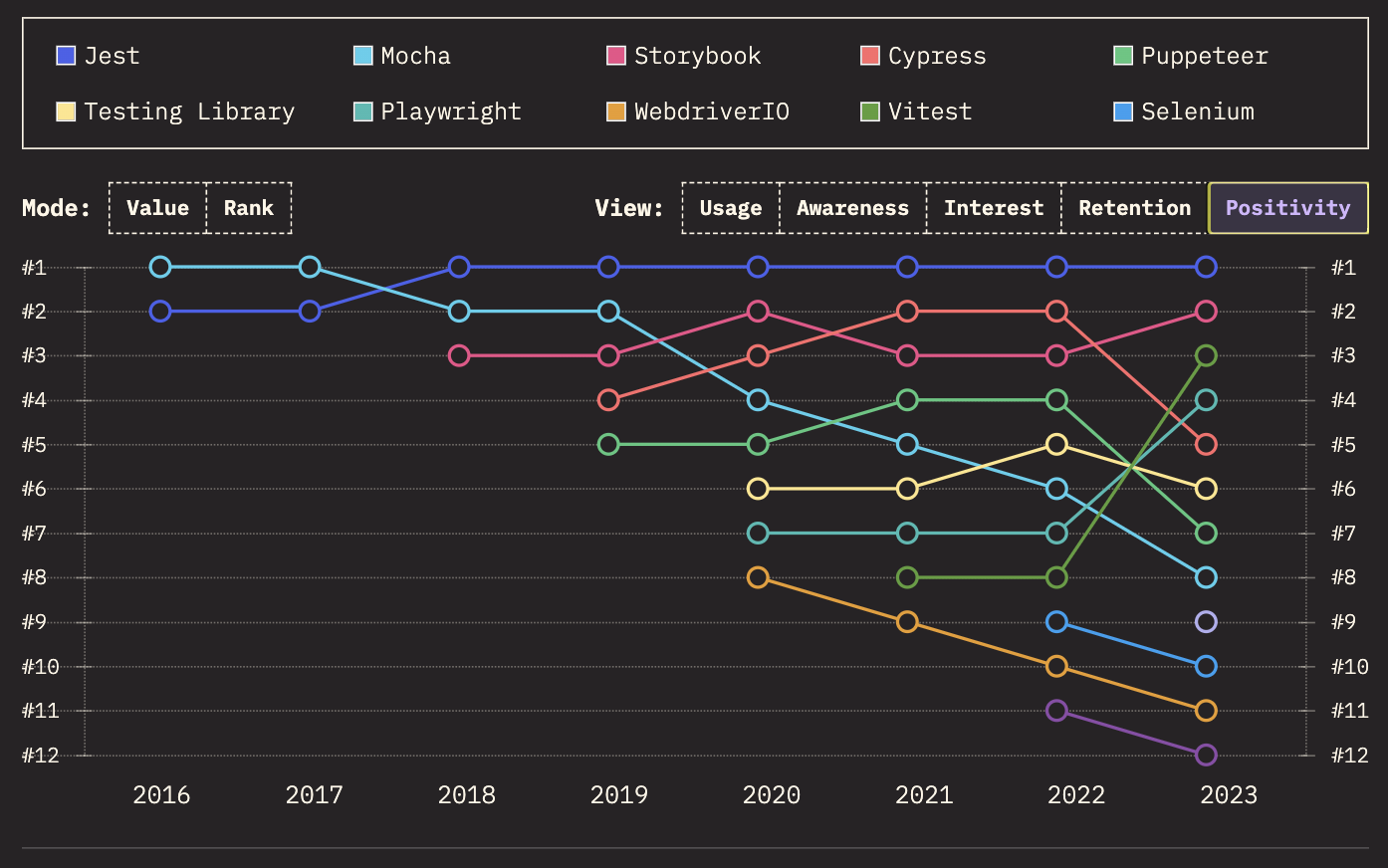 While Jest has been the most popular testing framework for JavaScript developers, Playwright has gained significant traction for end-to-end testing. Playwright is a powerful tool for testing web applications across different browsers and devices, providing a comprehensive testing solution for modern web development.
While Jest has been the most popular testing framework for JavaScript developers, Playwright has gained significant traction for end-to-end testing. Playwright is a powerful tool for testing web applications across different browsers and devices, providing a comprehensive testing solution for modern web development.
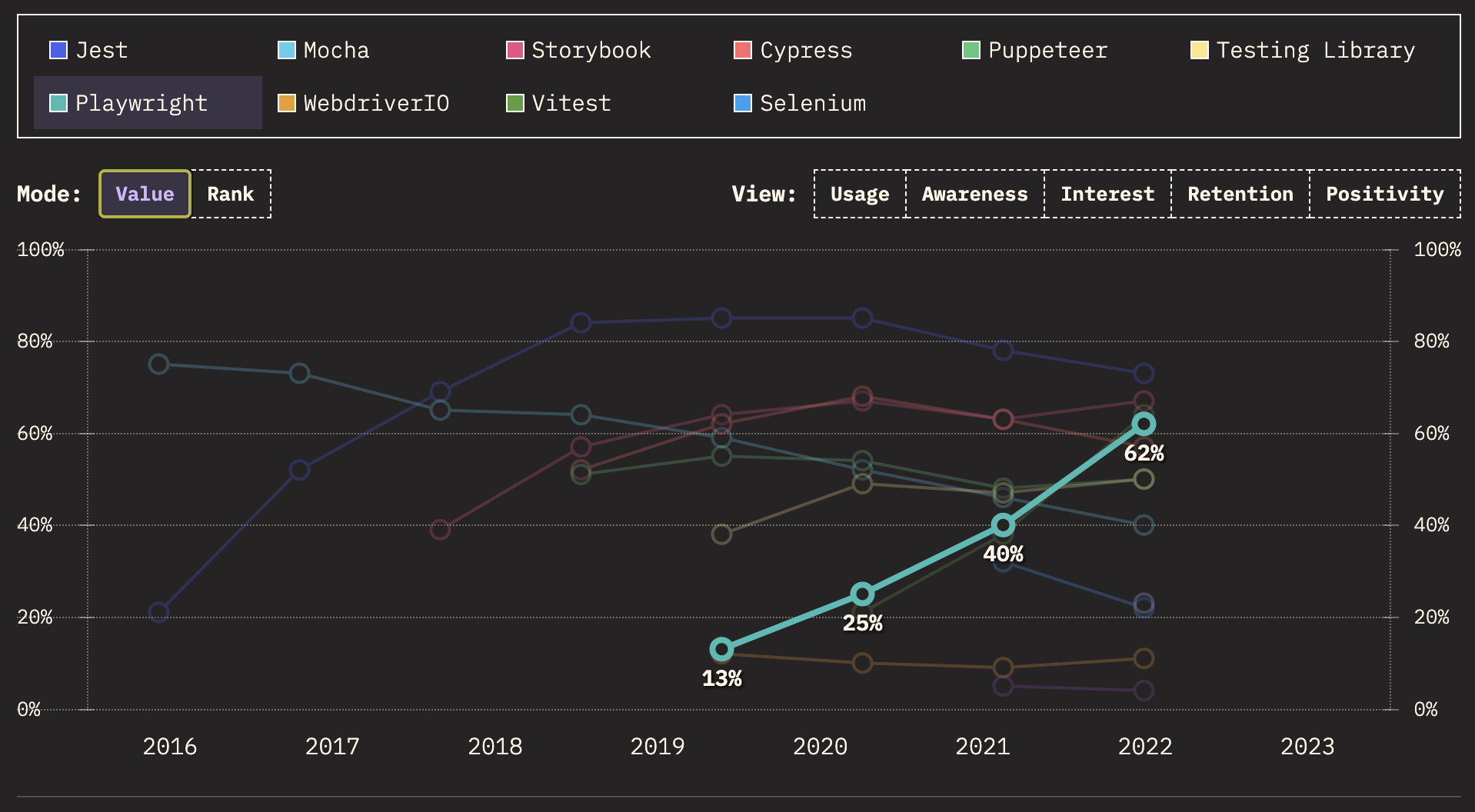
The Professional Approach to Coding
According to Robert C. Martin, author of “Clean Code” and a leading figure in the software industry, Test-Driven Development is “the professional way to code”. By following TDD practices, developers can ensure high-quality, maintainable code that meets the requirements of the software.Test-Driven Development is the professional way to code.
- Robert C. Martin

